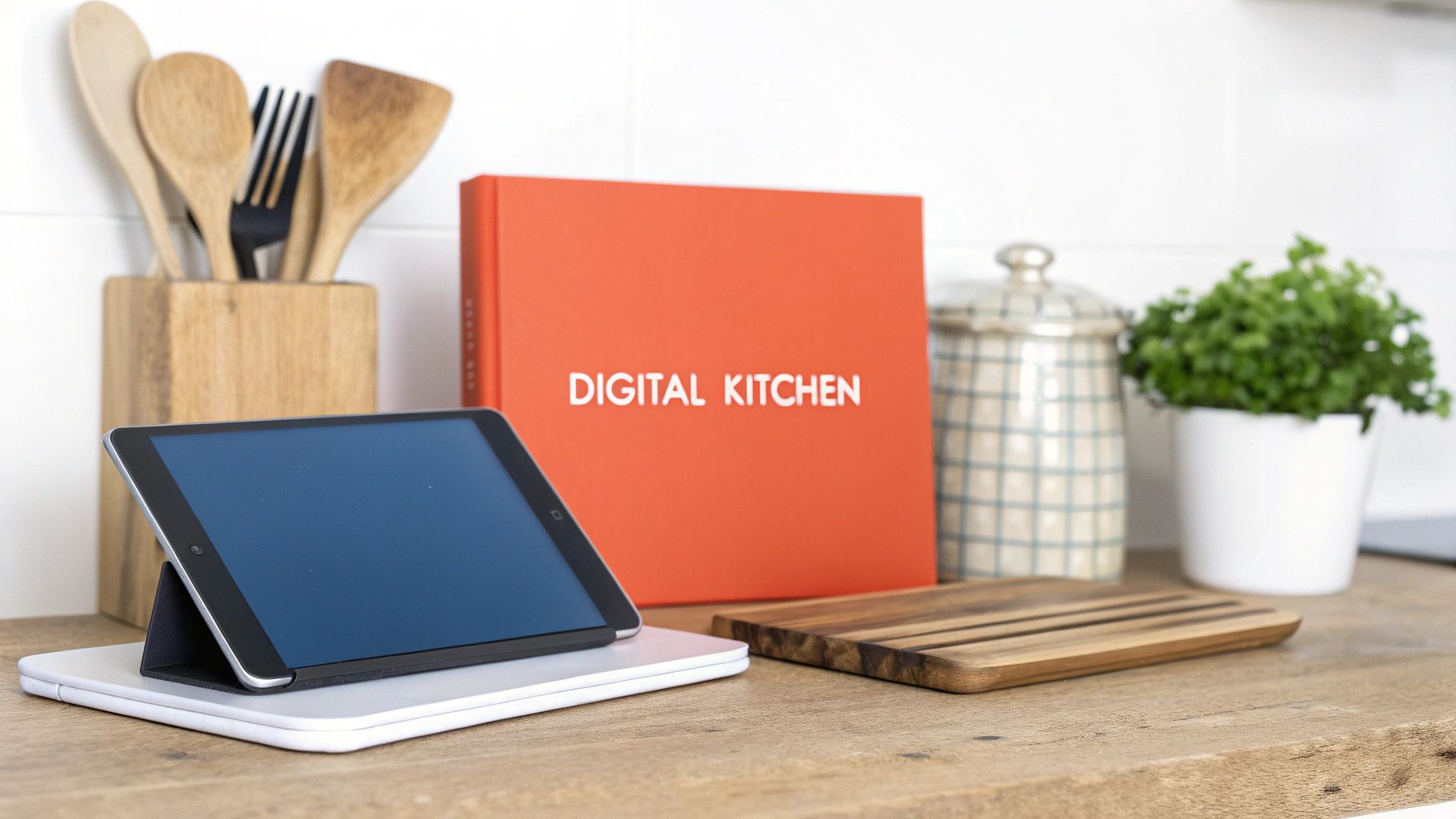Why Digital Recipe Management Changes Everything
That overflowing recipe box, the stained and torn pages of your favorite cookbook, the frantic search for Grandma's handwritten cookie recipe—sound familiar? This is the reality for many home cooks: a constant struggle against recipe chaos. Traditional methods of recipe management simply don't meet the demands of the modern kitchen. This means valuable time is lost searching, valuable space is taken up by overflowing binders, and valuable recipes are at risk of being lost or damaged.
However, organizing recipes online offers a powerful solution. Imagine having your entire recipe collection at your fingertips—searchable, shareable, and safe from spills. This is the promise of digital recipe management. For example, no more sifting through piles of paper. Instead, a quick keyword search reveals exactly the recipe you need.
Additionally, digital organization streamlines meal planning, turning a dreaded chore into a manageable task. Think of the convenience of creating weekly menus and generating grocery lists directly from your digital recipe collection.
Unexpected Benefits of Digitizing Recipes
This transition also brings unexpected benefits. Many home cooks discover newfound kitchen drawer space once their bulky recipe binders are gone. The "which cookbook was that in?" panic becomes a thing of the past.
Perhaps most importantly, digitizing family recipes ensures these cherished culinary traditions are preserved for future generations. This preservation can take many forms:
- Typed documents
- Scanned images of handwritten cards
- Audio recordings of family members sharing the stories behind the recipes
Navigating the World of Online Recipes
The rise of online recipe platforms has significantly impacted how people organize and access recipes. Websites like Allrecipes have become major sources for home cooks, with millions of recipes available. However, finding truly healthy recipes amongst the vast selection can be challenging. A study analyzing 5,237 main meal recipes from Allrecipes found that only 6 of these recipes fully complied with World Health Organization (WHO) nutritional guidelines. Explore this topic further.
This highlights the importance of careful selection and organization when building your online recipe collection. While the digital world offers a wealth of culinary inspiration, choosing the right tools and systems is key to transforming recipe chaos into culinary confidence.
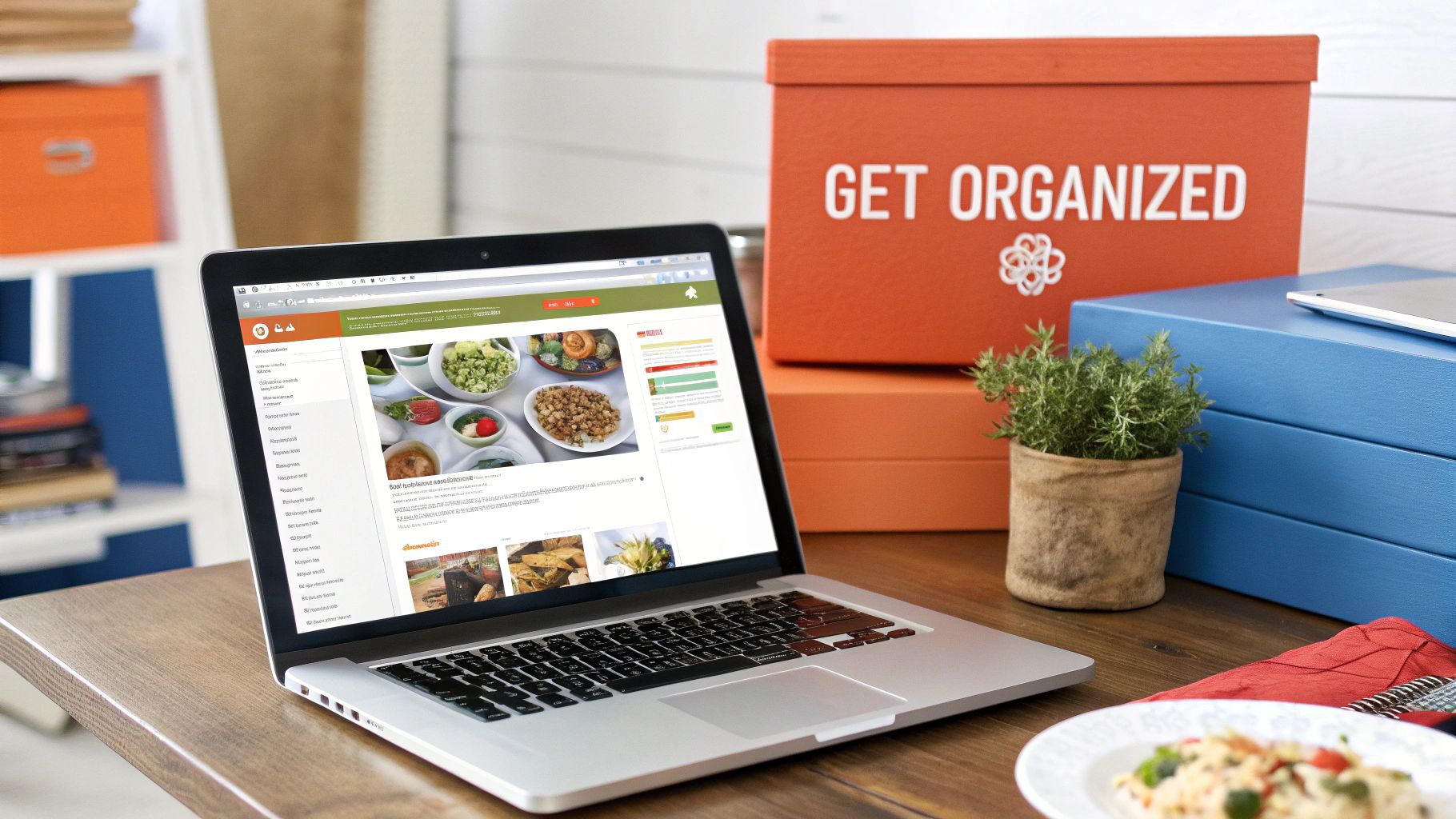
Choosing Your Digital Recipe Headquarters
Moving your recipes online is more than just typing them up or saving links. It's about building a central, searchable, and flexible system. This means selecting the right digital recipe headquarters: a platform or app designed for online recipe organization.
Key Players in the Recipe Organization Game
Several dedicated recipe management tools offer features beyond basic organization. Apps like Paprika, ChefTap, and Yummly are popular choices, each with its own pros and cons. These platforms let you import recipes from websites, organize them with tags and categories, create meal plans, and even generate grocery lists. You might be interested in: Our guide on choosing a digital recipe organizer.
For example, Paprika offers robust web clipping, automatically pulling recipe information from websites. ChefTap excels in its cross-platform compatibility, letting you access your recipes on various devices. Yummly emphasizes recipe discovery, offering smart recommendations based on your preferences.
Finding the Right Fit for Your Needs
The perfect platform depends on your cooking style and organizational preferences. Some cooks prioritize automatic web clipping, while others prefer a simple interface. Consider factors like cloud syncing, offline access, and integration with other apps.
To help you evaluate popular options, we've put together a comparison table:
Popular Recipe Organization Apps Comparison:
This table compares the key features, pricing, and platforms available for the most popular recipe organization applications
| App Name | Key Features | Price | Platforms | Cloud Sync | Meal Planning |
|---|---|---|---|---|---|
| Paprika | Web clipping, grocery lists, meal planning | Paid | iOS, Android, macOS, Windows | Yes | Yes |
| ChefTap | Cross-platform compatibility, recipe scaling, nutritional information | Paid | iOS, Android, Web | Yes | Yes |
| Yummly | Recipe recommendations, dietary filters, cooking timers | Free (with premium features) | iOS, Android, Web | Yes | Yes |
This table highlights some key differences, like pricing models and platform availability. It also shows similarities, such as the availability of cloud sync and meal planning across all three apps.
Mastering the Learning Curve
While these tools offer benefits, there's a learning curve with any new system. Entering recipes and learning a new interface might seem time-consuming at first. However, the long-term benefits of an organized digital recipe collection outweigh the initial effort. It's like reorganizing a pantry: a lot of work upfront, but much easier to use afterward.
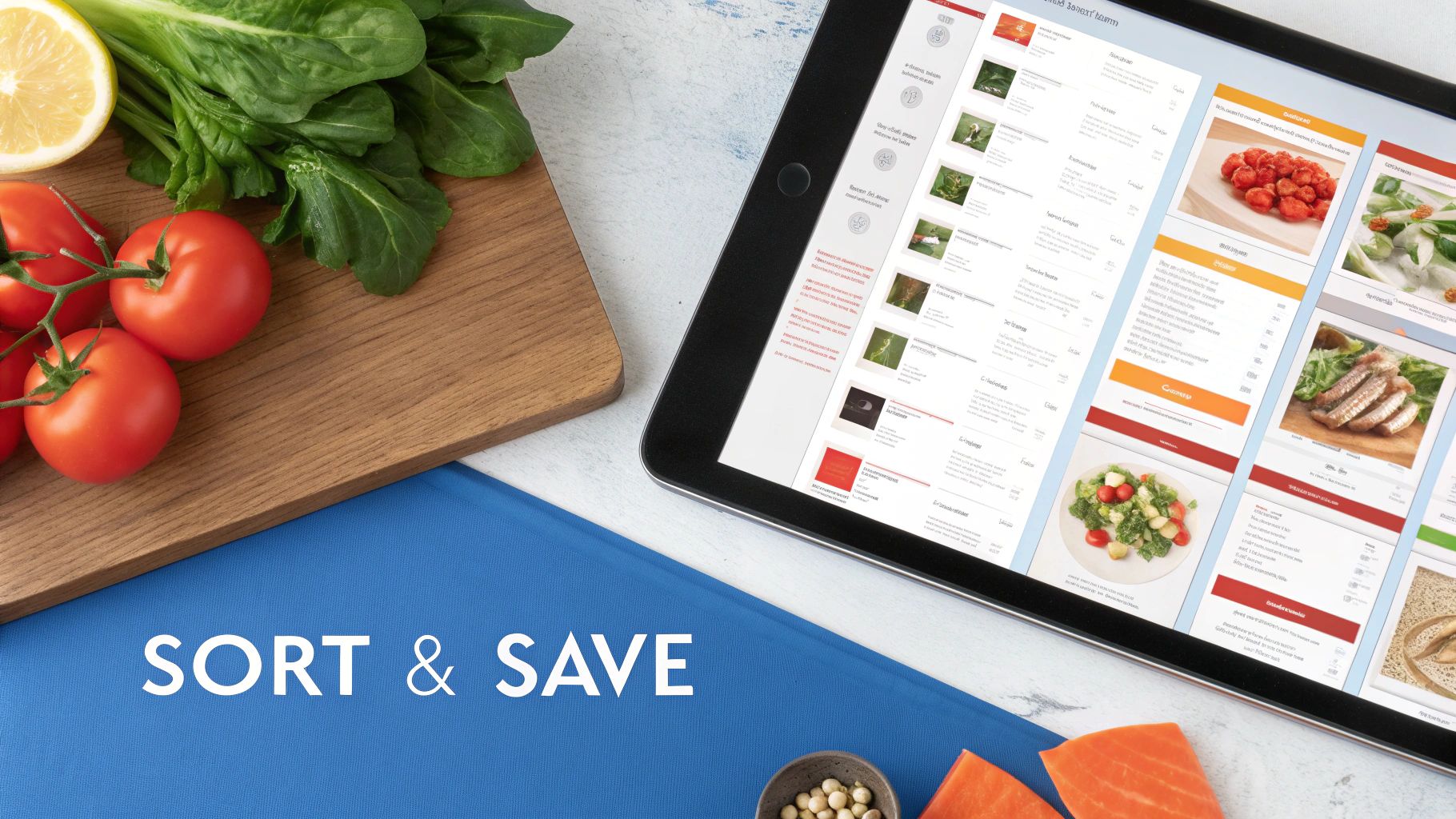
Hidden Gems and Power User Tips
Many recipe apps have hidden features that can improve your cooking experience. Some let you add personal notes to recipes, documenting modifications. Others offer voice command integration for hands-free use while cooking. Exploring these advanced features can unlock the full potential of online recipe organization. This lets you personalize your digital kitchen, creating a culinary command center.
Building Your Recipe System That Actually Works
The difference between recipe chaos and culinary confidence isn't the tool you use, but the system you build around it. Savvy digital cooks know online recipe organization is more than just storing files. It's about creating a personalized framework that grows with your culinary journey. This means a system that’s both flexible and robust enough for your expanding recipe collection.
Taming the Tagging Jungle
Tags are powerful organizational tools. Think of them as keywords describing different facets of your recipes. For example, you might tag a recipe with "weeknight-friendly," "vegetarian," or "comfort food." This lets you quickly search and filter your collection based on what you need. Want to learn more? Learn more in our article about How to Categorize Recipes.
A clear tagging system helps you go beyond basic categories to create truly personalized collections. Frequently cook for large groups? A "feeds-a-crowd" tag is invaluable. Focused on healthy eating? Tags like "low-carb" or "high-protein" help you track those recipes.
The Power of Consistent Naming
Just like a well-organized library uses a consistent cataloging system, your digital recipe collection needs consistent naming conventions. This small detail makes a big difference when you're searching. For example, always putting the main ingredient first ("Chicken Tikka Masala" instead of "Tikka Masala, Chicken") creates a predictable, searchable structure.
This also applies to how you name categories and tags. Consistent capitalization and phrasing eliminate duplicates. This makes finding what you need much easier. Imagine searching for "dessert" and finding it tagged as "Dessert," "desserts," and "sweet treats." Consistency avoids this.
Beyond Ingredients: Tagging for Cooking Methods and More
Ingredient tags are important, but consider expanding your strategy. Include cooking methods, cuisine types, and dietary restrictions. A "slow-cooker" tag helps you quickly find those recipes on a busy day. Interestingly, electronic data processing in food service management dates back to the 1960s. Early uses included food cost accounting systems using standardized recipes—still crucial for online organization today. Want to explore this further? Find more detailed statistics here.
Avoiding Common Pitfalls
Over-tagging is a common mistake. Adding every possible tag seems helpful, but it can actually make searching harder. Focus on the most relevant and frequently used tags. Also, avoid creating too many highly specific categories. A good system balances breadth and depth.
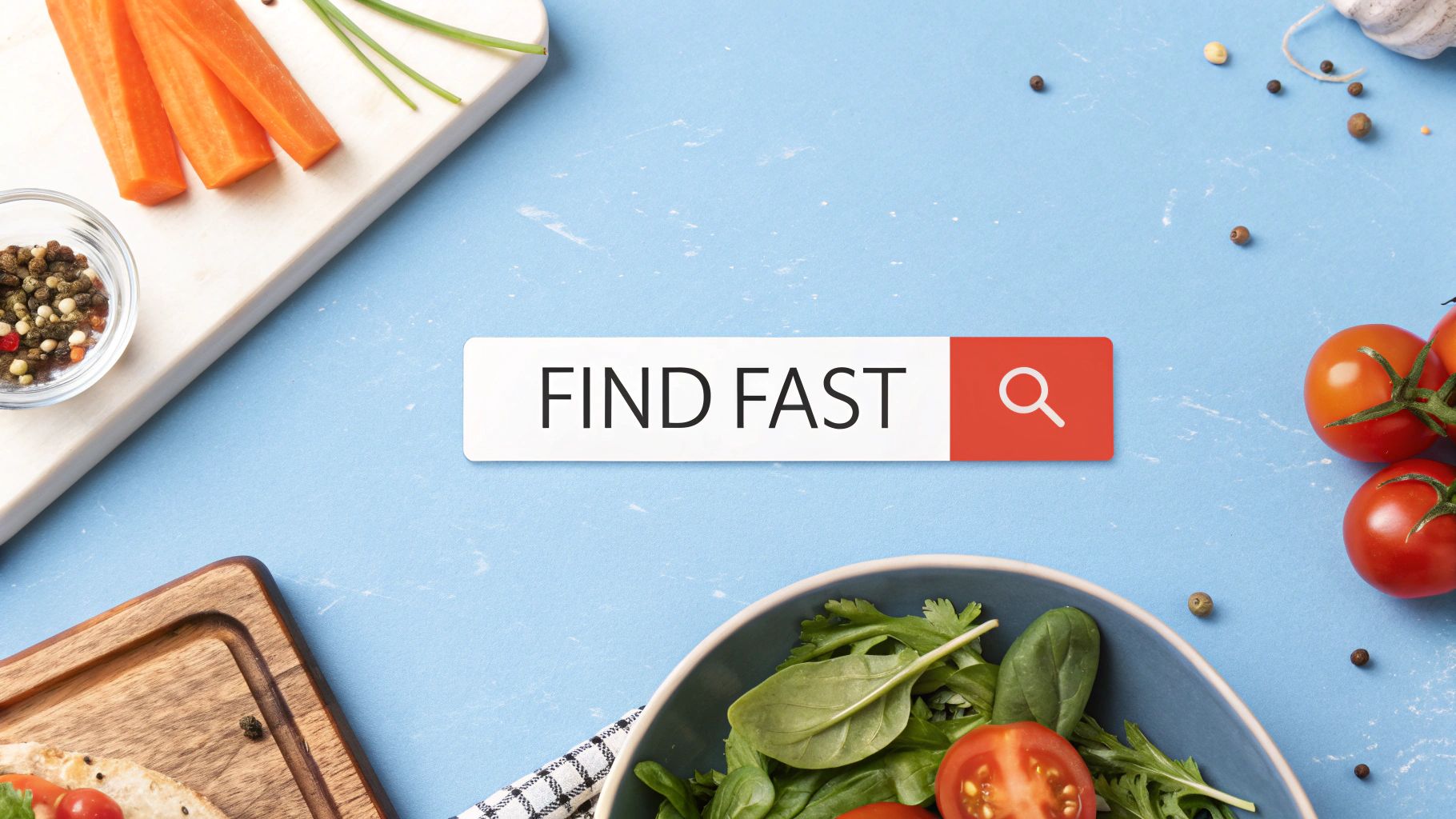
By using these strategies, you can transform your digital recipe collection from disorganized to a powerful culinary tool. This organized approach unlocks the true potential of online recipe management. You'll spend less time searching and more time cooking.
How AI Is Revolutionizing Recipe Discovery
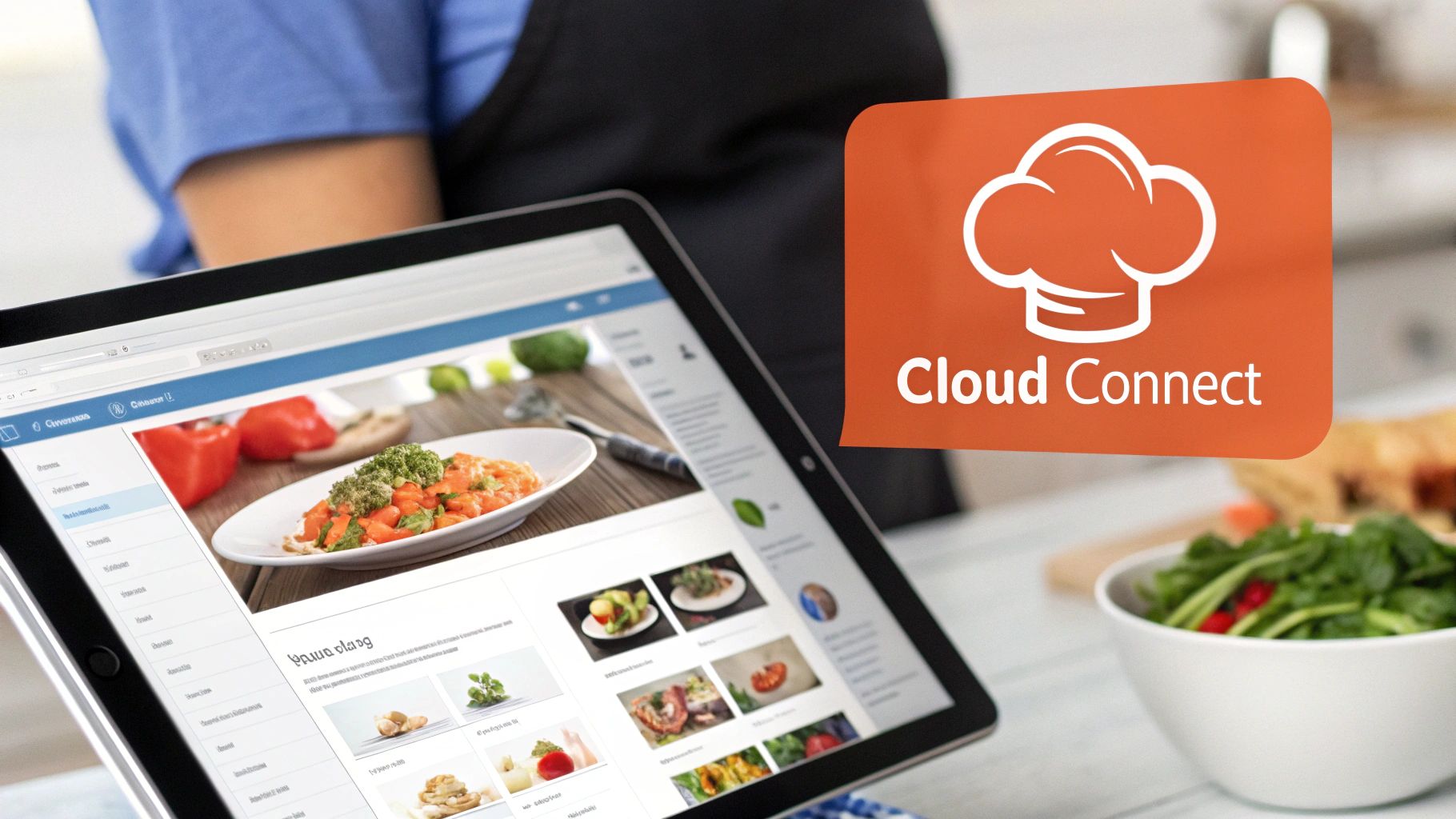
Beyond simply storing recipes online, artificial intelligence (AI) is changing how we discover and interact with recipes in our digital kitchens. These platforms are becoming smarter, offering personalized recommendations and making the entire cooking process more efficient. Finding new recipes is no longer about endless scrolling, but a curated experience.
Personalized Recommendations: Your AI Sous Chef
AI algorithms analyze your cooking habits to understand your preferences. They consider ingredients you frequently use, favored cuisines, and even preferred cooking methods. This information creates a unique culinary profile, enabling the system to suggest recipes tailored just for you. For example, if you often cook with chicken and enjoy quick weeknight meals, the AI might suggest a 30-minute chicken stir-fry.
This personalization also extends to dietary needs and preferences. The system can filter out recipes with allergens or unwanted ingredients. It can also suggest healthier versions of your favorite dishes, helping you achieve wellness goals without compromising flavor.
Breaking Out of Cooking Ruts and Exploring New Cuisines
AI-powered recipe discovery helps you break free from cooking routines. The system analyzes your existing recipe collection to identify gaps in your culinary experience, suggesting dishes to expand your horizons. Perhaps you haven't explored Thai cuisine. Based on your preference for noodles and peanuts, AI might recommend a Pad Thai recipe. The use of data science and technology in organizing recipes online has advanced significantly. Personalized recipe recommendation systems, powered by Natural Language Processing (NLP) and Machine Learning, suggest recipes based on ingredients, dietary restrictions, and taste preferences. Learn more about these advancements through research on personalized recipe recommendations.
The Future of Recipe Discovery
AI isn't just changing how we find recipes; it's changing how we cook. These advancements offer a more interactive and personalized cooking experience. Imagine an app that automatically adjusts serving sizes based on your guest list or suggests substitutions based on available ingredients. This is the potential of AI in the kitchen. For further exploration, you might be interested in comparing different recipe management apps.
From Inspiration to Creation: A Seamless Experience
AI creates a seamless transition from inspiration to creation. By integrating with other kitchen tools, like smart refrigerators and grocery delivery services, these platforms create a truly connected cooking experience. They can even generate shopping lists based on recommended recipes, ensuring you have everything you need to bring your culinary vision to life. This simplifies cooking and reduces stress, transforming meal preparation into an enjoyable experience.
The Screen-to-Table Workflow That Saves Hours
The real magic of organizing recipes online isn't just about having tidy digital files. It's about creating a smooth transition from finding a recipe on your screen to enjoying a delicious meal at your table. This section explores how efficient home cooks streamline their entire cooking process, saving precious time and minimizing kitchen frustrations.
From Recipe to Shopping List: Avoiding Extra Steps
Once you've picked your recipes for the week, creating a shopping list should be easy and automatic. Many recipe management apps like Paprika offer built-in shopping list features. These features can combine ingredients from multiple recipes, automatically group duplicate items, and even sort your list by grocery store aisles. This gets rid of the tedious job of manually writing a list, saving you time and making sure you don't forget anything at the store.
Scheduling Meal Prep: Making It Work With Your Life
Meal prepping can be a lifesaver for busy weeknights. Organizing your recipes online makes planning these sessions much simpler. By scheduling specific recipes for prep on certain days, you create a clear cooking plan. For example, if you plan to roast vegetables and cook grains on Sunday, you can quickly filter your recipe app for recipes using those prepped ingredients later in the week. This streamlined approach reduces mid-week stress and makes healthy eating easier.
Scaling Recipes: No More Math Problems
Whether you're cooking for a large group or adjusting a recipe for a smaller household, scaling recipes can sometimes be a math puzzle. Many digital recipe platforms like ChefTap offer built-in scaling tools. These tools automatically adjust ingredient amounts based on the number of servings you want, eliminating manual calculations and potential mistakes. This ensures consistent results every time and minimizes wasted ingredients.
Protecting Your Devices in the Kitchen
Cooking with digital devices often means they're near spills and splatters. Device protection is key. Consider using stands designed for tablets or phones in the kitchen. These stands offer hands-free recipe access and keep your devices safe from spills. Voice command features are another great option, allowing you to navigate recipes without touching your screen with messy hands.
Documenting Your Culinary Journey: Making Recipes Your Own
As you cook, you'll probably make adjustments to recipes based on what you like or what ingredients you have on hand. Digital recipe management makes it easy to save these changes. Many apps let you add personal notes to recipes, so you remember that perfect adjustment for next time. This helps you turn good recipes into truly personalized favorites.
To better illustrate the digital recipe workflow, let's look at a step-by-step breakdown:
The following table outlines the process, from recipe selection to meal preparation, using digital organization tools:
| Workflow Step | Digital Tools/Features | Time-Saving Tips | Common Challenges |
|---|---|---|---|
| Recipe Selection | Search filters, tags, collections | Use specific keywords, browse by cuisine | Too many options, difficulty deciding |
| Shopping List Creation | Integrated shopping list feature | Combine multiple recipes, organize by store aisle | Forgetting ingredients, incorrect quantities |
| Meal Prepping | Calendar integration, recipe scaling | Schedule prep days, scale recipes ahead of time | Limited time, sticking to the schedule |
| Cooking | Hands-free mode, voice commands | Use a stand, adjust volume | Device distractions, noisy kitchens |
| Post-Cooking Notes | Personal notes, rating system | Document changes, rate the recipe | Forgetting to add notes, inconsistent ratings |
This table demonstrates how digital tools can be used at each stage of the cooking process to simplify tasks and save time. From quickly finding recipes to keeping track of personalized changes, a digital workflow transforms how we approach cooking.
By using this screen-to-table approach, you can unlock the full potential of online recipe organization. This method saves time, reduces stress, and makes creating delicious meals a more enjoyable experience.
Honoring Heritage While Embracing Digital
The handwritten recipe card holds more than just instructions. It carries stories, memories, and a tangible piece of family history. These often splattered, faded cards are treasured heirlooms, passed down through generations. But their fragile nature makes them vulnerable to damage or loss. This is where organizing recipes online becomes not just practical, but an act of preservation.
Digitizing Without Losing the Soul
Digitizing family recipes doesn't mean abandoning the sentimental value of those handwritten treasures. It’s about finding ways to enhance and share those stories. Scanning a recipe card, for example, preserves the original handwriting, including those endearing little notes scribbled in the margins. Now, that recipe is searchable and shareable with family members near and far.
This digital preservation also allows you to expand on the story. Consider recording audio or video of family members talking about the recipe, sharing memories of making it, explaining its origins, or describing why it's so special. This adds another layer of richness to the digital version, making it a truly interactive piece of family history.
Capturing the Details That Matter
When digitizing handwritten recipes, focus on capturing the unique details that tell a story. Photograph or scan not just the recipe itself, but also the food stains, the faded ink, the creased edges. These imperfections are part of the recipe’s journey and add to its charm.
Think of it like preserving an old photograph. You wouldn't want to erase the scratches or tears because they're part of the photo's history. The imperfections on a recipe card are similarly part of its story.
Creating Digital Family Cookbooks
Organizing recipes online allows you to create digital family cookbooks that are easily accessible and can be continuously updated. These digital cookbooks can become cherished heirlooms, shared and enjoyed for generations to come.
You can organize them by category, by family member, or even by special occasion. Include photos of the finished dishes, stories about family gatherings where the recipe was served, and even videos of the cooking process. This transforms a simple collection of recipes into a vibrant, living document of family culinary traditions.
Practical Tips for Digitization
Several methods help preserve these culinary treasures:
- Scanning: Use a high-resolution scanner to create digital copies of recipe cards and pages.
- Photography: Take clear photos of recipes, ensuring good lighting and legible text.
- Transcription: Type handwritten recipes into a digital document, preserving the original wording and any notes.
- Audio Recording: Capture family members sharing stories and memories associated with the recipes.
These digital versions can be stored securely online, backed up on external hard drives, and easily shared with family. This ensures these treasured recipes are never lost and bridges the gap between generations, connecting families through shared culinary experiences.
Ready to transform your recipe collection and preserve your cherished family recipes? Try Recify, the app designed to help you save, organize, and share your recipes from any online source. Learn more about Recify and start organizing your recipes today!
